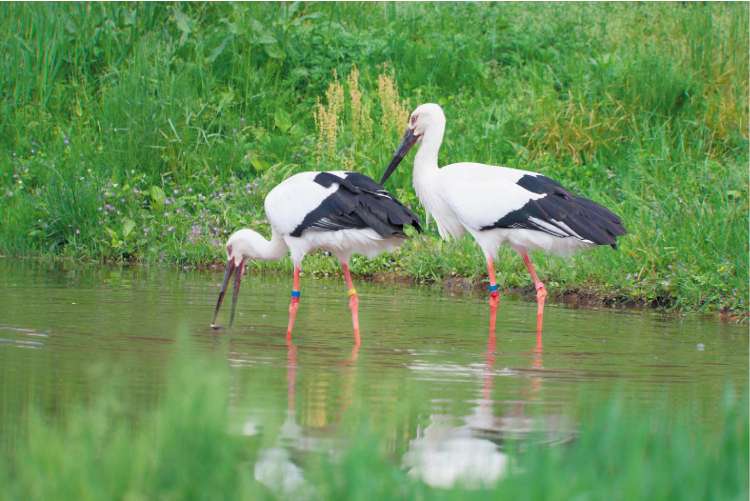Japan turns back clock to give new life to lost storks

Your support helps us to tell the story
From reproductive rights to climate change to Big Tech, The Independent is on the ground when the story is developing. Whether it's investigating the financials of Elon Musk's pro-Trump PAC or producing our latest documentary, 'The A Word', which shines a light on the American women fighting for reproductive rights, we know how important it is to parse out the facts from the messaging.
At such a critical moment in US history, we need reporters on the ground. Your donation allows us to keep sending journalists to speak to both sides of the story.
The Independent is trusted by Americans across the entire political spectrum. And unlike many other quality news outlets, we choose not to lock Americans out of our reporting and analysis with paywalls. We believe quality journalism should be available to everyone, paid for by those who can afford it.
Your support makes all the difference.When Japan's last oriental white stork died in 1971 it was thought that the birds had disappeared forever. The wetlands where the stork nested had been irrigated, and development damaged its habitat. But in a remarkable success story, the storks are thriving again after a reintroduction programme.
After more than three decades of extinction, the first captive storks were released into the wild in 2005. By 2007 the first chick had hatched, and this year a further nine chicks arrived.
Yoshito Ohsako, who heads the breeding programme at Toyooka, said: "We were so happy when we found the nests. It's not so long since we started, and this is real progress; a lot of people didn't even think we'd succeed at all."
Japan was forced to do the unthinkable: it had to go back in time. Aggressive development had driven the birds to extinction, so the only option left was to attempt to return the ecosystem to its pre-1971 state.
The Hyogo district – once the birds' heartland – bore the scars of heavy industrialisation and modern farming. Land that was not polluted or developed was used for farming, so the paddyfields which had once supplied plentiful food for fish, frogs and snakes dried up and became contaminated with pesticides.
To make this landscape hospitable again has meant going back to more traditional irrigation systems that allow rivers and ditches to flow into paddyfields. This creates pools of shallow stagnant water that encourage the ecosystem that the birds can feed on.
Cutting pesticides and using more traditional cultivation methods has also helped make the wetlands less toxic. Some electricity cables have been put underground to stop the birds flying into them.
Professor Ohsako said: "The connections between the paddyfields and the streams and ditches disappeared. In our project we reinstated the aquatic connection to create 'fish ways', that channelled fish to shallow water."
The total number of oriental white storks in the world is believed to be as low as 2,500, with most in China, Korea and Russia.
The renaissance of the birds comes as biodiversity takes centre stage in global politics. Biodiversity will be high on the agenda today when environment ministers gather for pre-G8 summit talks in Kobe.
Yuri Onodera, of Friends of the Earth Japan, said that while such reintroduction schemes were laudable, Japan lacked commitment to biodiversity on a global scale. "Japan may be putting energy into conserving its own domestic landscapes, but its commitment internationally is failing," said Mr Onodera.
"It has been a strong opponent of a binding commitment to global biodiversity; its domestic commitment has little impact while they are lagging behind on international commitment."
Join our commenting forum
Join thought-provoking conversations, follow other Independent readers and see their replies
Comments